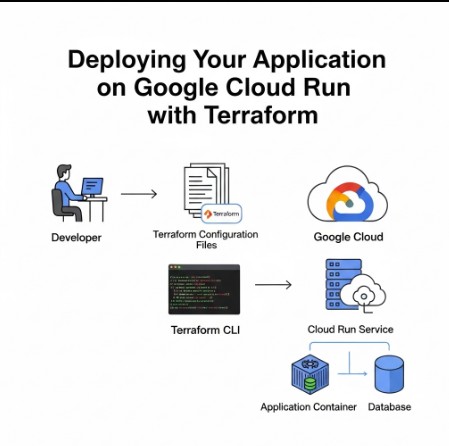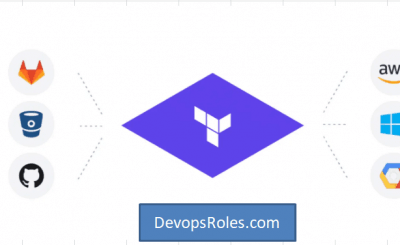This comprehensive guide delves into the process of deploying applications to Google Cloud Run using Terraform, a powerful Infrastructure as Code (IaC) tool. Google Cloud Run is a serverless platform that allows you to run containers without managing servers. This approach significantly reduces operational overhead and simplifies deployment. However, managing deployments manually can be time-consuming and error-prone. Terraform automates this process, ensuring consistency, repeatability, and efficient management of your Cloud Run services. This article will walk you through the steps, from setting up your environment to deploying and managing your applications on Google Cloud Run with Terraform.
Table of Contents
Setting Up Your Environment
Before you begin, ensure you have the necessary prerequisites installed and configured. This includes:
- Google Cloud Platform (GCP) Account: You need a GCP project with billing enabled.
- gcloud CLI: The Google Cloud SDK command-line interface is essential for interacting with your GCP project. You can download and install it from the official Google Cloud SDK documentation.
- Terraform: Download and install Terraform from the official Terraform website. Ensure it’s added to your system’s PATH.
- Google Cloud Provider Plugin for Terraform: Install the Google Cloud provider plugin using the command:
terraform init - A Container Image: You’ll need a Docker image of your application ready to be deployed. This guide assumes you already have a Dockerfile and a built image, either in Google Container Registry (GCR) or another registry.
Creating a Terraform Configuration
The core of automating your Google Cloud Run deployments lies in your Terraform configuration file (typically named main.tf). This file uses the Google Cloud provider plugin to define your infrastructure resources.
Defining the Google Cloud Run Service
The following code snippet shows a basic Terraform configuration for deploying a simple application to Google Cloud Run. Replace placeholders with your actual values.
resource "google_cloud_run_v2_service" "default" {
name = "my-cloud-run-service"
location = "us-central1"
template {
containers {
image = "gcr.io/my-project/my-image:latest" # Replace with your container image
resources {
limits {
cpu = "1"
memory = "256Mi"
}
}
}
}
traffic {
percent = 100
type = "ALL"
}
}Authentication and Provider Configuration
Before running Terraform, you need to authenticate with your GCP project. The easiest way is to use the gcloud CLI’s application default credentials. This is usually handled automatically when you set up your Google Cloud SDK. This is specified in a separate file (typically providers.tf):
terraform {
required_providers {
google = {
source = "hashicorp/google"
version = "~> 4.0"
}
}
}
provider "google" {
project = "your-gcp-project-id" # Replace with your project ID
region = "us-central1" # Replace with your desired region
}Deploying Your Application to Google Cloud Run
Once your Terraform configuration is complete, you can deploy your application using the following commands:
terraform init: Initializes the Terraform project and downloads the necessary providers.terraform plan: Creates an execution plan showing the changes Terraform will make. Review this plan carefully before proceeding.terraform apply: Applies the changes and deploys your application to Google Cloud Run. Type “yes” when prompted to confirm.
After the terraform apply command completes successfully, your application should be running on Google Cloud Run. You can access it via the URL provided by Terraform’s output.
Managing Your Google Cloud Run Service with Terraform
Terraform provides a robust mechanism for managing your Google Cloud Run services. You can easily make changes to your application, such as scaling, updating the container image, or modifying resource limits, by modifying your Terraform configuration and running terraform apply again.
Updating Your Container Image
To update your application with a new container image, simply change the image attribute in your Terraform configuration and re-run terraform apply. Terraform will detect the change and automatically update your Google Cloud Run service. This eliminates the need for manual updates and ensures consistency across deployments.
Scaling Your Application
You can adjust the scaling of your Google Cloud Run service by modifying the min_instance_count and max_instance_count properties within the google_cloud_run_v2_service resource. Terraform will automatically propagate these changes to your Cloud Run service.
Advanced Configurations for Google Cloud Run
The basic examples above demonstrate fundamental usage. Google Cloud Run offers many advanced features that can be integrated into your Terraform configuration, including:
- Traffic Splitting: Route traffic to multiple revisions of your service, enabling gradual rollouts and canary deployments.
- Revisions Management: Control the lifecycle of service revisions, allowing for rollbacks if necessary.
- Environment Variables: Define environment variables for your application within your Terraform configuration.
- Secrets Management: Integrate with Google Cloud Secret Manager to securely manage sensitive data.
- Custom Domains: Use Terraform to configure custom domains for your services.
These advanced features significantly enhance deployment efficiency and maintainability. Refer to the official Google Cloud Run documentation for detailed information on these options and how to integrate them into your Terraform configuration.
Frequently Asked Questions
Q1: How do I handle secrets in my Google Cloud Run deployment using Terraform?
A1: It’s recommended to use Google Cloud Secret Manager to store and manage sensitive data such as API keys and database credentials. You can use the google_secret_manager_secret resource in your Terraform configuration to manage secrets and then reference them as environment variables in your Cloud Run service.
Q2: What happens if my deployment fails?
A2: Terraform provides detailed error messages indicating the cause of failure. These messages usually pinpoint issues in your configuration, networking, or the container image itself. Review the error messages carefully and adjust your configuration as needed. In case of issues with your container image, ensure that it builds and runs correctly in isolation before deploying.
Q3: Can I use Terraform to manage multiple Google Cloud Run services?
A3: Yes, you can easily manage multiple Google Cloud Run services in a single Terraform configuration. Simply define multiple google_cloud_run_v2_service resources, each with its unique name, container image, and settings.

Conclusion
Deploying applications to Google Cloud Run using Terraform provides a powerful and efficient way to manage your serverless infrastructure. By leveraging Terraform’s Infrastructure as Code capabilities, you can automate deployments, ensuring consistency, repeatability, and ease of management. This article has shown you how to deploy and manage your Google Cloud Run services with Terraform, from basic setup to advanced configurations. Remember to always review the Terraform plan before applying changes and to use best practices for security and resource management when working with Google Cloud Run and Terraform.Thank you for reading the DevopsRoles page!
